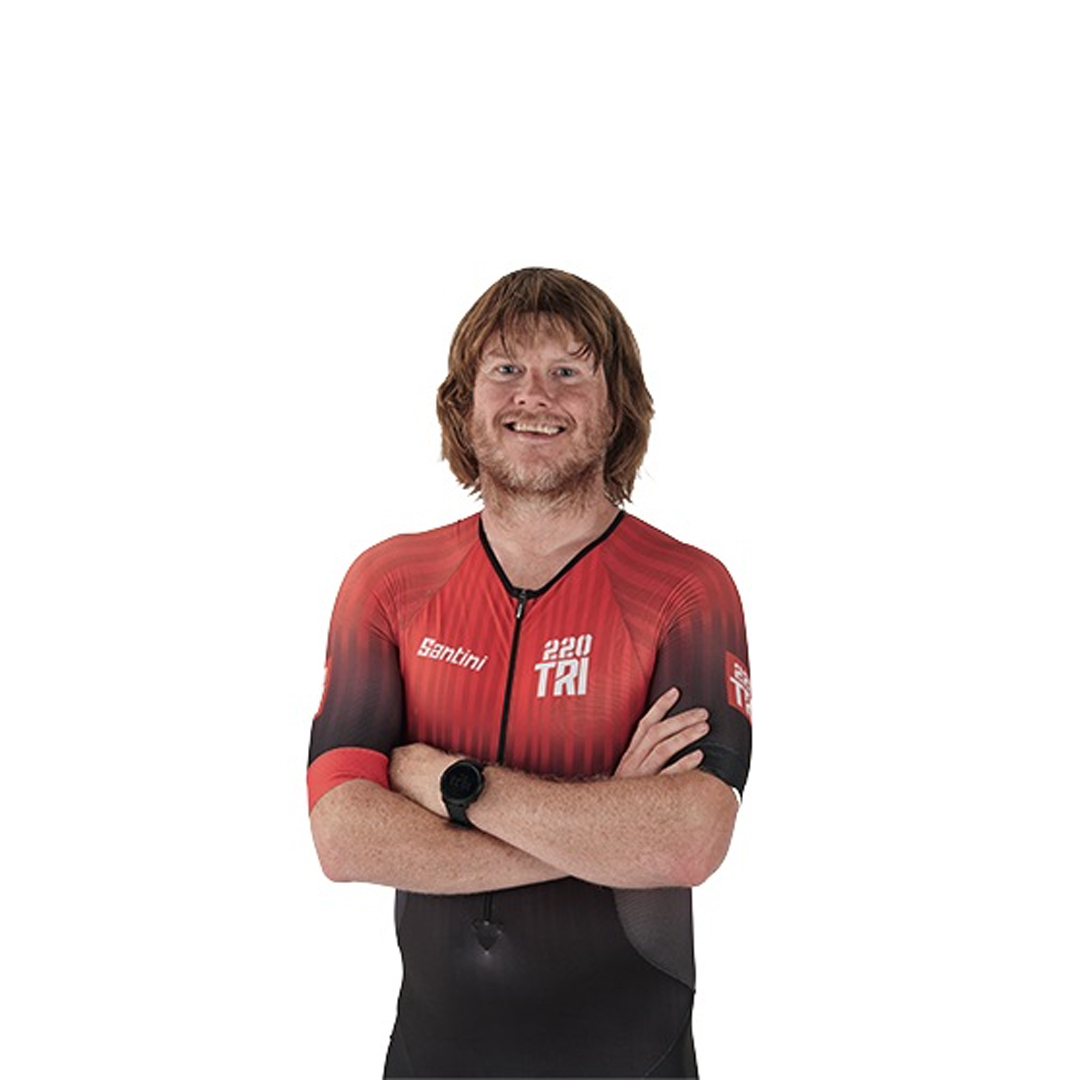During the week he’s the Global Senior Director of Gatorade Sport Science Institute. At the weekends, he’s an Ironman. He’s competed in this weekend’s Ironman World Championships five times. Here he recounts his 2008 effort, where he came 719th overall and 161st in the M35-39 category with a time of 10:52:08, and reveals how science plays a key role in conquering Hawaii…
NUTRITION
I went into Ironman Hawaii with a plan based entirely on scientific evidence. Through my team’s research, we’ve proved that drinks containing glucose (or maltodextrin) and fructose improve the delivery of energy to the muscle and performance.
This is because both glucose and fructose use different transporters in the intestine, improving the speed of carbohydrate absorption – think of it as moving people out of a room with two doors open rather than one.
The downside is that your body has to adjust to taking on carbs during a race. But further research has also shown that the intestine can adapt to this change in consumption.
I started my race with one bottle of highly concentrated carbohydrate solution (basically gels plus water); the gels had a glucose to fructose ratio of 2:1. I also relied on gels with the same composition during the run.
On the bike I had two bottles of sports drink (again with the same composition), while my other fluid intake was water. Because each gel contained 200mg of sodium, with 22 gels in total my sodium intake was about 4-5g during the race, which should be enough to prevent major salt losses as a result of sweating.
GEAR
I used a time-trial bike (Colnago) with aero deep-rim wheels (Zipp 808) and Cinelli time-trial bars. The Zipp 808 front wheel was possibly a mistake because the wind was stronger than predicted, making it hard to keep my bike (and myself) on the road.
I didn’t use an aero helmet, because on a hot day the disadvantages of overheating might outweigh the advantages of the small time gain. Chrissie Wellington uses the same approach.
As part of my preparation for Hawaii, I also spent some time in a wind tunnel, where I learned that sometimes (and always in a race like Hawaii) it’s much more important to focus on comfort and the ability to produce power, even if this means increasing aerodynamic drag.
As for the tri-suit, I opted for a white number (Skinfit), as the differences in
heat absorption compared to a coloured outfit is remarkable.
TRAINING
The science behind training isn’t well developed with coaches and athletes believing in very different approaches. But the science hasn’t actually contributed to common practice. This, however, is about to change as several top researchers are now researching training adaptations.
There’s increasing interest in the theory ‘train low, compete high’, which is the nutrition analogue of the altitude-training concept ‘live high, train low’. The idea is that you train with low glycogen levels and load your carbohydrate stores before the race.
Earlier this year I trained with Ethiopian marathon runners near Addis Ababa who often run for two hours before breakfast – and you could never question their abilities as runners.
In the Western world, on the other hand, we’re often told that breakfast is the most important meal of the day. But missing breakfast before a training session, even if this means the quality of the session is reduced, may not have as negative an effect as once was thought – as long as they’re balanced with subsequent high-quality sessions.
RACE TACTICS
One important factor when taking on the behemoth that is Hawaii is maintaining a constant race pace. Research convincingly shows that the best overall times can be achieved when the pacing is constant.
The difficulty with an Ironman race – and especially Hawaii where conditions change frequently – is judging what pace can be maintained for the entire race. HRMs, power meters on the bike and run splits can help, but often people go by feeling alone. One particularly common problem is gastro-intestinal distress. Going hard and then trying to take on fluid and energy is not always the best combination.
Two-time Ironman World Champion Tim DeBoom told me he waits until the pace settles before eating. And you’ll find that most pro racers, especially those that come out of the water first, maintain the gap they’ve created by generating a higher power output for the first hour before settling down to an output they can sustain.
This means that absorption needs to be managed. Trying to force down too many carbs too quickly can result in none-too-welcome stomach upsets. Pacing is crucial, therefore, and should be dependent on the individual’s tolerance of foods and drinks.
HEAT ACCLIMATION
With little protection from the sun, heat and humidity are big challenges in Hawaii. And preparing in England in September isn’t easy, with low temperatures and few acclimatisation opportunities.
To help, you can always train while wearing multiple layers, but using a turbo trainer in a hot room is more beneficial. I spent time at the University of Birmingham in a heat chamber where a typical training session would be at 35°C and 70% humidity. Studies have shown that the body needs a minimum of 10 sessions with the body core temperature elevated to 38-39°C. These sessions aren’t pleasant but they do work!
After three weeks of this training I flew out to Maui two weeks before the race to acclimatise. During the race I didn’t suffer from the heat, which was particularly brutal this year, and crossed the finish line in a time of 10:52:08.
